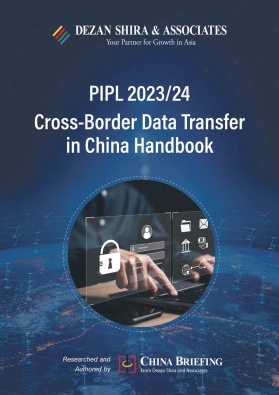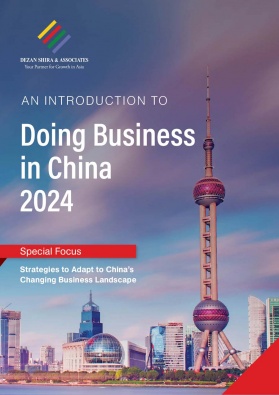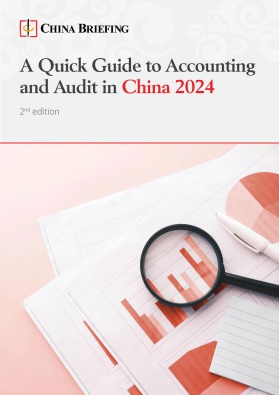The New Hong Kong-Mainland Reciprocal Enforcement of Judgments Regime: An Overview
The Mainland Judgements in Civil and Commercial Matters (Reciprocal Enforcement) Ordinance (Cap. 645) (“Ordinance”) is set to come into effect on January 29, 2024. This legislation aims to operationalize the Arrangement on Reciprocal Recognition and Enforcement of Judgments in Civil and Commercial Matters by the Courts of the Mainland and of the Hong Kong Special Administrative Region in Hong Kong (“Arrangement”).
Signed between the Supreme People’s Court and the Government of the Hong Kong Special Administrative Region (HKSAR) on January 18, 2019, the Arrangement is a long-waited effort to reduce the need for re-litigation of identical disputes in the courts of Hong Kong and the Chinese Mainland. Moreover, the Arrangements are designed to offer better protection to parties’ interests.
Once the Ordinance becomes effective, the new Hong Kong-Mainland Recognition and Enforcement of Judgments (REJ) regime will be established. This development is poised to bolster Hong Kong’s standing as a regional hub for intellectual property trading and as a center for international legal and dispute resolution services. The REJ regime positions Hong Kong as the inaugural jurisdiction to establish such an arrangement with the Chinese Mainland, encompassing a broad scope. This holds significance in shaping the future landscape of REJ arrangements between China and other jurisdictions.
In this article, we introduce the features of the new Hong Kong-Chinese Mainland REJ regime and assess its potential ramifications on businesses.
Background
In August 2008, the Secretary for Justice of Hong Kong and the Supreme People’s Court of China jointly implemented the Arrangement on Reciprocal Recognition and Enforcement of Judgments in Civil and Commercial Matters by the Courts of the Mainland and of the Hong Kong Special Administrative Region Pursuant to Choice of Court Agreements between Parties Concerned (Choice of Court Arrangement).
As implied by its title, the Choice of Court Arrangement centers on the necessity for an exclusive jurisdiction agreement between the parties involved, favoring either the Chinese Mainland or the Hong Kong court responsible for enforcing the judgment. However, the combination of this requirement and the limited scope of covered judgments, which predominantly addresses monetary matters, has resulted in an unsatisfactory and incomplete arrangement.
To establish a more comprehensive mechanism on reciprocal recognition and enforcement of judgments, on January 18, 2019, the HKSAR Government and the Supreme People’s Court signed the Arrangement.
Given the growing trade, economic activities, and social interactions between Hong Kong and the Chinese Mainland, it becomes evident the need for an early implementation of the Arrangement. On October 26, 2022, the draft Ordinance that seeks to implement the Arrangement was passed by the Legislative Council. On November 10, 2023, the HKSAR Government announced that the new Ordinance will come into operation on January 29, 2024. The Choice of Court Agreement will be suspended spontaneously. This marks the start of a new Hong Kong-Mainland REJ regime.
Key features of the new Hong Kong-Mainland REJ regime
The new Arrangement extends its applicable scope to cover legally effective judgments in civil and commercial matters between the courts of the Mainland and the HKSAR. This includes civil damages awarded in criminal cases and those related to specific disputes over intellectual property rights.
The term “civil and commercial matter” denotes a matter classified as such under both Mainland Law and Hong Kong Law.
However, it’s important to note that the Arrangement excludes judgments in a series of civil and commercial matters, such as those pertaining to personal relations, succession, bankruptcy, voter qualification, validity of arbitration agreements, and the recognition of arbitration awards. The recognition and enforcement of judgments on these matters are regulated by other pertinent guiding documents.
Compared to the previous regime, the following changes are noteworthy:
- Removal of the exclusive jurisdiction agreement: The recent regulations have eliminated the requirement to establish a written “choice of court agreement”. In its place, a jurisdictional test has been introduced. According to this test, to enforce a Mainland judgment in Hong Kong or vice versa, applicants must show a connection with the “specific territory of the same country” (Mainland or Hong Kong) at the time the proceedings were accepted. This connection can be established through various means, including the defendant’s domicile, the defendant’s place of business, and the location where the contract or infringement occurred.
- Broader subject matters: As outlined in Article 3 of the 2019 Arrangement, the scope of judgments has been broadened to go beyond contractual disputes. It now includes a wider range of civil and commercial matters, incorporating specific types of disputes related to intellectual property rights. Additionally, criminal judgments under both Mainland and Hong Kong laws, which contain an order for the payment of a sum of money as compensation or damages by a party to the proceedings, are also covered.
- Inclusion of non-monetary relief as enforceable remedies: Alongside the expansion of subject matters, the recent regulations have broadened the scope of enforceable measures to encompass both monetary and non-monetary relief. This means that judgments can now address a range of expenses associated with compliance, such as injunctions, declarations, equitable relief, remedies, and more, with the exception of punitive damages.
- Validation of rulings from subordinate courts: The scope of courts that can exert a “legally effective judgment” has broadened. In Hong Kong, this includes the Court of Final Appeal, The Court of Appeal and the Court of First Instance of the High Court, the District Court, the Labor Tribunal, the Lands Tribunal, the Small Claims Tribunal, and the Competition Tribunal. As for the Mainland, the coverage now includes any judgment of the second instance, any judgments of the primary instance that cannot be appealed or has not yet reached the time limit for appeal, and any judgment falling under the previous criteria made in accordance with the procedure for trial supervision.
Two mechanisms established to facilitate the REJ between Hong Kong and Mainland
The Ordinance establishes the following mechanisms to facilitate the recognition and enforcement of civil and commercial judgments between the Chinese Mainland and Hong Kong:
- The registration in Hong Kong of effective Mainland Judgments in civil or commercial matters; and
- The application for certified copies of and certificates for effective Hong Kong Judgments in civil or commercial matters, providing a streamlined process for parties seeking recognition and enforcement of Hong Kong Judgments in the Mainland.
To apply for the registration of Mainland judgments in civil or commercial matters in Hong Kong, the following steps are involved:
- The applicant submits an application to the Court of First Instance of the High Court, accompanied by an affidavit or affirmation, which includes, among other documents: (A) A sealed copy of the Mainland Judgment; and (B) A certificate issued by the Mainland court that rendered the judgment, certifying that it pertains to a civil or commercial matter effective in the Mainland.
- If the court is satisfied that the conditions for registration are met, it may issue a registration order for the Mainland Judgment, or a portion thereof, to be registered.
- The applicant serves a notice of registration on all potential respondents, i.e., all other parties against whom the Mainland Judgment may be enforced. The notice of registration must provide comprehensive details of the registration order and the time limit for applying to set aside the registration.
- Within 14 days after being served the notice of registration (unless the court specifies a different time limit), a respondent may apply to the court to ‘set aside’ the registration.
- After the expiration of the time limit for a setting-aside of the application or after any setting-aside of the application, if submitted, has been conclusively dismissed, the Mainland Judgment may be registered.
- The registration transforms the registered Mainland Judgment into an enforceable judgment in Hong Kong, treated as if it were originally issued by the Court of First Instance of the High Court on the day of registration.
To apply for certified copies of Hong Kong Judgments and certificates for Hong Kong judgments in civil or commercial matters for use in the Mainland court:
- Generally, the application should be made on affidavit to the registrar of the Hong Kong court which gave the judgment, with certain exceptions. For judgments given by the Competition Tribunal, the application should be made to the Registrar of the High Court. For judgments given by the Lands Tribunal, Labor Tribunal, or Small Claims Tribunal, the application should be made to the Registrar of the District Court.
- The relevant Hong Kong court issues to the applicant a certified copy of the Judgment together with a certificate certifying that the Judgment is a Hong Kong Judgment in a civil or commercial matter and is effective in Hong Kong.
- The applicant makes the application to the Mainland court for recognition and enforcement of the Hong Kong Judgment in the Mainland in accordance with the Mainland law.
Potential impact on businesses
The recent changes outlined above mark a significant advancement in the REJ regime.
The removal of exclusive jurisdiction agreements not only enhances flexibility in selecting legal venues but also streamlines the registration process for legal proceedings. Moreover, the expanded scope of the new REJ regime prevents parties from undergoing re-litigation of the same disputes in the courts of both Hong Kong and the Chinese Mainland, offering heightened protection and predictability in cross-border transactions.
The Ordinance’s straightforward reciprocal enforcement mechanism empowers parties to safeguard their interests, simultaneously reducing the risks, costs, and time associated with cross-border litigation. This mechanism enables individuals or entities with judgments to efficiently enforce debts, fostering confidence in cross-border dealings, regardless of their location in the Mainland or Hong Kong.
Finally, Hong Kong’s pioneering status as the first jurisdiction to establish a comprehensive REJ arrangement with the Chinese Mainland enhances its unique position as Asia’s leading resolution center, especially in disputes involving cross-border transactions.
About Us
China Briefing is written and produced by Dezan Shira & Associates. The practice assists foreign investors into China and has done so since 1992 through offices in Beijing, Tianjin, Dalian, Qingdao, Shanghai, Hangzhou, Ningbo, Suzhou, Guangzhou, Dongguan, Zhongshan, Shenzhen, and Hong Kong.
Please contact the firm for assistance in China at china@dezshira.com. Dezan Shira & Associates has offices in Vietnam, Indonesia, Singapore, United States, Germany, Italy, India, and Dubai (UAE). We also have partner firms assisting foreign investors in The Philippines, Malaysia, Thailand, Bangladesh.
- Previous Article China Extends Unilateral Visa-Free Policy to Switzerland, Announces FTA Upgrade
- Next Article







